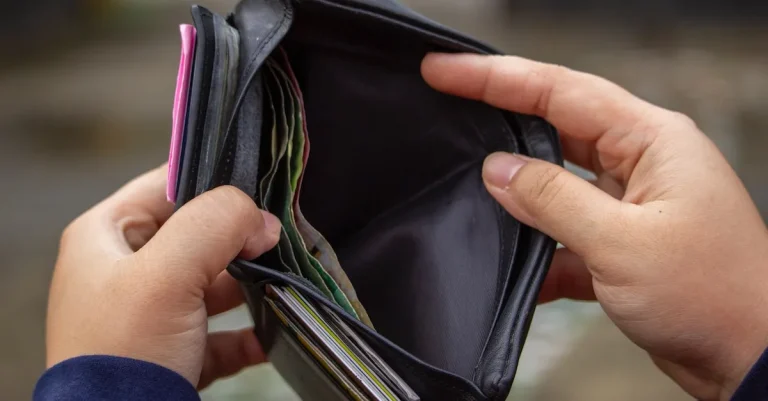Are Cancelled Stamps Worth Anything? A Detailed Look
Old stamps sitting in that inherited collection may still hold value, even if they’re canceled. Read on to find out everything you need to know about the value of canceled stamps.
If you’re short on time, here’s a quick answer to your question: Yes, canceled stamps can still be worth money to collectors, but usually less than unused stamps. Condition, rarity, demand, and how they are canceled affects value.
In this comprehensive guide, we’ll cover factors that affect the value of canceled stamps, how to identify rare and valuable cancellations, what makes a stamp condition good, and how to sell your canceled stamp collection.
What Makes Cancelled Stamps Valuable?
Cancelled stamps, also known as used stamps, can hold value depending on several factors. Here are the key elements that contribute to the value of cancelled stamps:
Condition
The condition of a cancelled stamp plays a significant role in determining its value. Stamps that are in mint condition, with no tears, creases, or damage, are generally more valuable than those that are heavily used or damaged.
Collectors often seek cancelled stamps that are well-preserved and free from any flaws.
Rarity
Rarity is another crucial factor in determining the value of cancelled stamps. Stamps that were printed in limited quantities or have become scarce over time tend to be more valuable.
Some cancelled stamps may have low production numbers, while others may have been issued for a short period of time. These rare stamps attract the attention of collectors and can fetch higher prices.
Cancellation Type
The type of cancellation on a stamp can also affect its value. Different cancellation methods were used throughout history, ranging from pen or ink markings to machine-generated cancellations.
Some collectors prefer certain types of cancellations, such as those with clear and well-centered postmarks, while others may be interested in unusual or rare cancellation variations.
Demand and Popularity
The demand and popularity of cancelled stamps can greatly impact their value. Stamps associated with significant historical events, famous individuals, or popular themes tend to have higher demand among collectors.
Additionally, stamps from certain countries or time periods may be more sought after, leading to increased value. The current market trends and collector preferences also play a role in determining the value of cancelled stamps.
It’s worth noting that determining the value of cancelled stamps can be a complex process, involving factors such as rarity, condition, and demand.
If you’re interested in learning more about the value of specific cancelled stamps, it’s advisable to consult reputable philatelic resources or seek the guidance of professional stamp appraisers.
What is Considered Good Condition for Cancelled Stamps?
When it comes to collecting stamps, the condition of a cancelled stamp plays a crucial role in determining its value.
Stamps that are in good condition are highly sought after by collectors and can fetch a higher price in the market. But what exactly is considered “good condition” for cancelled stamps?
Minimal Damage
In general, a cancelled stamp in good condition should have minimal damage. This means that the stamp should not have any major tears, creases, or missing pieces.
It should also be free from any stains, smudges, or discoloration.
While some minor wear and tear is expected due to the cancellation process, stamps with excessive damage are considered to be in poor condition and may not hold much value.
Clear Cancellation Markings
Another important aspect of a cancelled stamp condition is the clarity of its cancellation markings.
The cancellation mark is usually a postmark or ink stamp that indicates that the stamp has been used and is no longer valid for postage.
In good condition, the cancellation markings should be clear and legible without any smudging or fading. This helps authenticate the stamp and adds to its overall appeal and value.
Well-Centered Design
When examining a cancelled stamp, it is also important to consider the design and how well it is centered on the stamp.
A stamp with a well-centered design is more visually pleasing and is generally considered to be in better condition. On the other hand, a stamp with an off-center design may be seen as less desirable and may not command as high a price.
Unused Margins
In addition to the condition of the stamp itself, collectors also pay attention to the presence of unused margins.
Margins refer to the blank areas surrounding the stamp. Stamps with intact and wide margins are often preferred as they provide a more complete and visually appealing presentation.
On the contrary, stamps with narrow or trimmed margins may be considered to be in poorer condition.
It is worth noting that the criteria for what is considered “good condition” can vary depending on the specific stamp and the preferences of collectors.
Most Valuable Cancellation Types
When it comes to cancelled stamps, certain types of cancellations can significantly increase their value.
Collectors and philatelists are always on the lookout for these rare cancellation types that add uniqueness and historical significance to a stamp. Let’s explore some of the most valuable cancellation types:
Fancy Cancels
Fancy cancels are handcrafted cancellations that were often created by postmasters or clerks to add a decorative touch to a stamp. These cancellations can take various forms, such as stars, flowers, animals, or even intricate designs.
Fancy cancels are highly sought after by collectors due to their aesthetic appeal and rarity. Some of the most coveted fancy cancels include the “Bulls Eye” cancel, the “Flag” cancel, and the “Butterfly” cancel.
Postal Markings
Postal markings refer to any additional marking or annotation made on a stamp or its envelope by postal authorities.
These markings can provide valuable information about the stamp’s journey, such as the date and location of its cancellation.
Certain postal markings, like those from remote or historical post offices, can greatly increase a stamp’s value. For example, a stamp cancelled with a rare marking from a small town that no longer exists could be highly sought after by collectors.
Philatelic Cancels
Philatelic cancels are cancellations specifically created for stamp collectors. These cancellations often feature special designs or themes related to significant events, anniversaries, or commemorative occasions.
Philatelic cancels are typically produced in limited quantities and used for a short period of time, making them desirable for collectors.
Some collectors even specialize in collecting stamps with specific philatelic cancels, such as those related to space exploration, famous personalities, or national holidays.
While these cancellation types can add value to a cancelled stamp, it’s important to note that the overall condition of the stamp, its rarity, and other factors also play a role in determining its worth. Top Rare and Valuable Cancelled Stamps
Cancelled stamps, also known as used stamps, have been a subject of interest for stamp collectors for many years.
While some people may assume that cancelled stamps are worthless, there are actually several rare and valuable cancelled stamps that can fetch a high price in the collector’s market. Here, we will take a detailed look at some of the top rare and valuable cancelled stamps that collectors seek.
The Inverted Jenny
One of the most famous and sought-after cancelled stamps is the Inverted Jenny. Issued in 1918, this stamp features an airplane known as the Curtiss JN-4 biplane, which was accidentally printed upside down.
Only a small number of these stamps exist, making them extremely rare and valuable. In fact, a single
Inverted Jenny stamp was sold for a whopping $1.35 million in 2016, making it one of the most valuable cancelled stamps ever.
The British Guiana 1c Magenta
Another highly coveted cancelled stamp is the British Guiana 1c Magenta. Issued in 1856, this stamp is the only known example of its kind. It is considered to be the rarest and most valuable stamp in the world.
The British Guiana 1c Magenta last sold for $9.5 million in 2014, making it the most expensive stamp ever sold.
The Treskilling Yellow
The Treskilling Yellow is a Swedish stamp issued in 1855. It gets its name from the fact that it was originally printed with a green color, but due to a printing error, a few stamps were mistakenly printed in yellow.
Only one of these yellow stamps is known to exist today, making it incredibly valuable. The Treskilling Yellow was last sold for $2.3 million in 2010.
The Basel Dove
The Basel Dove is a Swiss stamp issued in 1845. It is renowned for its beautiful design, featuring a white dove carrying a letter.
The stamp was printed in a limited quantity and is considered one of the first postage stamps in the world. Today, the Basel Dove is highly sought after by collectors and can fetch a high price.
Other Rare and Valuable Cancelled Stamps
In addition to the aforementioned stamps, there are many other cancelled stamps that hold significant value in the collector’s market.
These include the Penny Black, the Mauritius “Post Office” stamps, the Hawaiian Missionaries, and the Cape of Good Hope “Woodblock” stamps. These stamps are highly sought after due to their rarity and historical significance.
It’s important to note that the value of cancelled stamps can vary greatly depending on factors such as condition, rarity, and demand.
If you possess any cancelled stamps, it’s worth consulting with a stamp expert or doing thorough research to determine their potential value.
Collecting cancelled stamps can be a fascinating hobby that combines history, art, and economics, and can potentially yield great rewards for those who are passionate about philately.
Tips for Selling Your Cancelled Stamp Collection
If you have a cancelled stamp collection and are wondering if they are worth anything, you’ll be pleased to know that there is a market for these stamps.
While not all cancelled stamps have high value, there are certain factors that can increase their worth. Here are some tips to help you sell your cancelled stamp collection:
Get Them Appraised
Before selling your cancelled stamps, it’s important to get them appraised by a professional. An appraiser will be able to determine the condition, rarity, and value of your stamps.
This will give you a better idea of how much you can expect to sell them for. You can find reputable appraisers through philatelic societies, stamp clubs, or online directories.
Sell Through Auction
One of the best ways to sell your cancelled stamps is through auctions. Auction houses attract collectors and enthusiasts who are willing to pay top dollar for rare and valuable stamps.
Make sure to choose an auction house that specializes in philately and has a good reputation. Additionally, consider setting a reserve price to ensure that you don’t sell your stamps for less than their actual value.
Sell to Dealers or Collectors
Another option for selling your cancelled stamps is to approach dealers or collectors directly. Dealers often have a network of buyers and can offer you a fair price for your collection.
Collectors, on the other hand, may be interested in specific types of stamps and may be willing to pay a premium for them. You can advertise your stamps for sale on philatelic forums or through classified ads to attract potential buyers.
Remember, the value of cancelled stamps can vary greatly depending on factors such as rarity, condition, and demand. It’s important to do your research and consult with experts before selling your collection. Happy selling!
Conclusion
While stamps that still have their original gum and have never been postally used are the most valuable, cancelled stamps can still be worth money, especially if they are rare, in demand or have interesting cancellations.
Condition is key – stamps with light cancellations and no tears or stains will fetch higher prices. With a bit of research and patience, you can turn that old inherited collection of cancelled stamps into cash.









